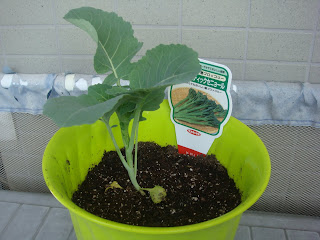Someone mentioned to me over the weekend that no one is interested in pictures of my garden. It's like pictures of peoples' cats. This person suggested that I add some educational information about gardening and the plants I'm growing so that people have a reason to keep coming back.
I gotta say, I tried that with the avocado blog, but people never really did come back. They never really came in the first place, so that might be a reason.
A couple weeks ago I planted tomatoes. I wrote about how I had preserved the seeds from last year for planting this year. I actually did the same thing for a particularly tasty watermelon, so instead of showing the final result, I'd like to share the whole process.
There are essentially two kinds of seeds, Wet and Dry. The difference being that wet seeds have juice or other organic matter attached to them, while dry seeds come out of the seed pod dry.
Dry seeds are typically found in flowers, nuts, grains, and herbs. When they are picked, they can simply be put into a paper envelope and preserved until the next planting season. I usually just fold some normal office-use paper into a small packet and use staples to seal it.
Wet seeds can be found in most fruits and vegetables. They need to be dried off before preservation. Mold and rot are major risks if the seed is not completely dry. In the wild, these plants would fall to the ground or get eaten by animals, but here on the veranda they will get put into pots. I don't want them sprouting early, so I devised a simple way to dry them out and preserve them at the same time.
Below is the final result. I'll be working backwards since the seeds are already preserved, but you can reverse these steps to figure out how I originally saved the seeds.
This is the packet of watermelon seeds. I used a sheet of tissue paper to hold the seeds. Tissue paper absorbs water and is biodegradable. Since it is likely that the seeds will stick to the paper after drying, it is important that the storage medium be able to go into the ground with the seeds.

That is Scotch tape holding the paper in a tight roll.
Unrolling the paper, you can see the seeds held in a fold in the middle of the tissue. I use an extra fold to add some strength to the paper and give the seeds an extra layer of protection. On the right, the paper is completely unfolded. You can see that some of the seeds have some whitish marks. This is tissue paper that has adhered to the seed. No big deal.


To start the seeds, I picked up a ten-pack of these starting trays at the home center. I think it cost about 200 yen for 10. Pretty expensive, and I think I could have gotten a better price if I shopped around, but I don't have a lot of seeds to start and I don't need 100 trays. This is the easiest choice for me.
Only 10 seeds were saved last year, so I only filled 10 pots. Not every seed is expected to sprout, but since the number of seeds is so low, I decided to give each seed its own pot. Also, with the strong winds we've been having lately the more weight, the better.
Just fill each pot with soil and poke a hole in with your finger. Piece of cake!
After planting each seed, the whole kit gets a good dousing of water. Like the tomatoes, I'll give these guys a good watering once a week.

One thing to think about is how much water the plants are getting. Too much means that the seeds will get waterlogged and the sprouts may drown. Too little will dry them out completely. It's tough to get a good balance since we are not using a greenhouse, but giving them a thorough watering once a week ought to be just right this season.

















